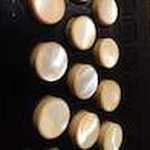I have come across many Hohner club accordions over the years and have come to appreciate the quality of them. From the humble Erika with it’s beautiful tone through to the Ouvertures and Model X which are of top quality to rival any modern box. The club system is covered on our Club page here.
Hohner did not invent the Club layout and other makers produced Clubs as far back as the early 20s but Hohner ran with the concept and produced tens of thousands of accordions in this format. Instrumental in the establishment of the club craze they produced some fantastic boxes through the mid twentieth century.
Whilst all Clubs they all have their own strengths and quirks. The modell 1 and Erika are more akin to a high quality 2 1/2 row and as such make great conversions. In contrast the Modell X is an out and out Club machine with a sound all of its own. In the hands of a good musician playing the music it was built for there is nothing like it. The Ouverture is a very refined four or five voice machine with the depth of sound normally found in a high end piano accordion. These may have fallen out of favour with some but some of them are of a quality that rivals anything produced today.
Club Accordion Models
The 2815 or 1600 or 2915 or Weiner or pokerwork or whatever..
This was not one of the club accordions but deserves a mention as this is where the Modell 1 came from. Originally a Koch design, Hohner bought the Koch company and the combination of the Koch two row with the Hohner two row of the time produced one of the most enduring designs which is still made in China today. the modell 1 Club accordion is a direct descendant of this box which went on to become the pokerwork and erica that we know today. the pictures show a Hohner produced Koch and the original Koch Ouverture which lent its name to the later Hohner offering, the preciosa name was originally a tiny Koch 2 row



Modell 1
The earliest of the modern Hohner club accordions . A descendant of the Koch. Originally with a wooden keyboard but more commonly with an improved steel mechanism keyboard. This is a lovely sounding box, these came in 19+2. 19+4 (picolletta) and 21+4 (piccola very rare) layouts, there were a couple of other variations on this like the swiss style HUG. These are more like a nice 2 row with a gleighton and make great conversions. do not underestimate the modell 1! These make a far superior altenative to a pokerwork, better reeds, a proper wood case, better keyboard and…look where the accidentals are located, that’s right just where you need them…brilliant


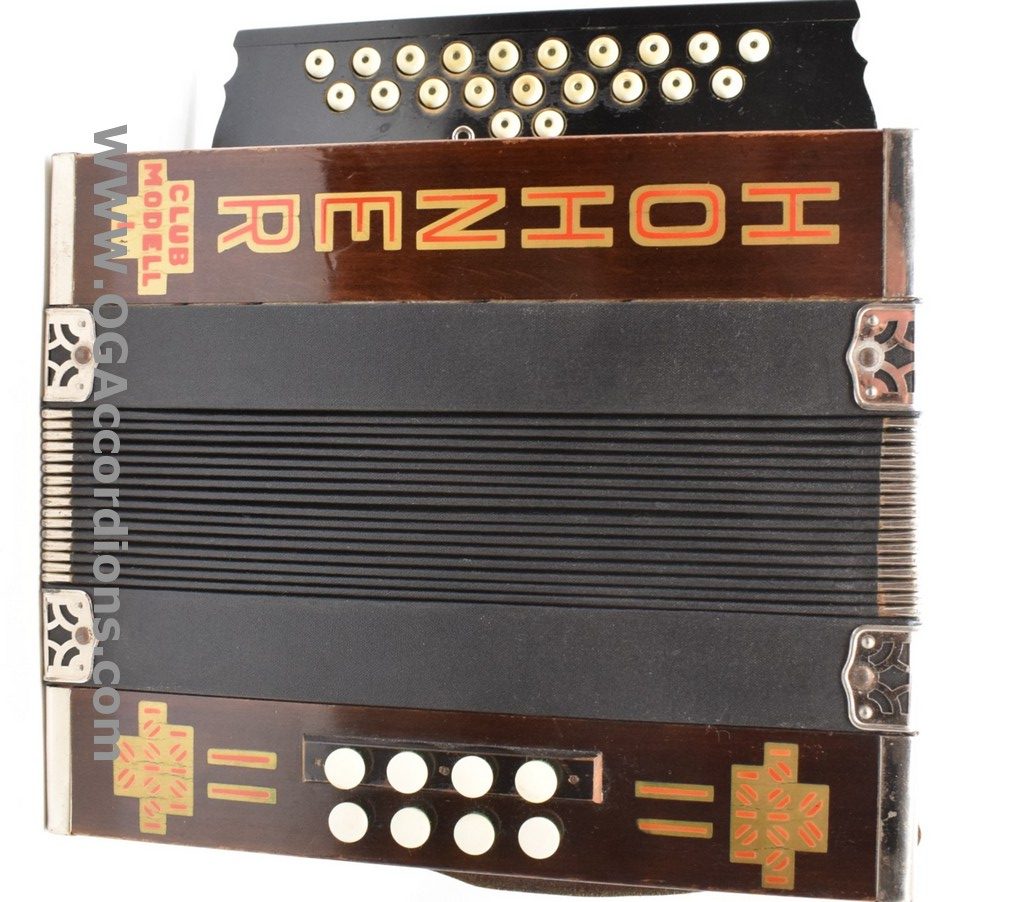
Erika / Club Modell 2/Club 2
Whilst there are minor differences in bass button type, and some minor variations in reed types the Erika and Modell 2 are all but identical to, and a direct evolution of the Modell 1. They come in many different guises. Nearly all are 21 + 4 these normally have the old Hohner Zinc reedplates and are as good a hohner 2 1/2 row as you can get. Reed wise the earlier Erika designs use the earlier tapered zinc H reeds which carried on in the model 2, IV and Club III. The later Erikas had the more square reed tongues used in the cheaper piano accordions of the time . the Model 2 always had the tapered type and also better quality zinc T reeds on the bass end without brass weights. There was another variant with a curved metal grille which is identical internally


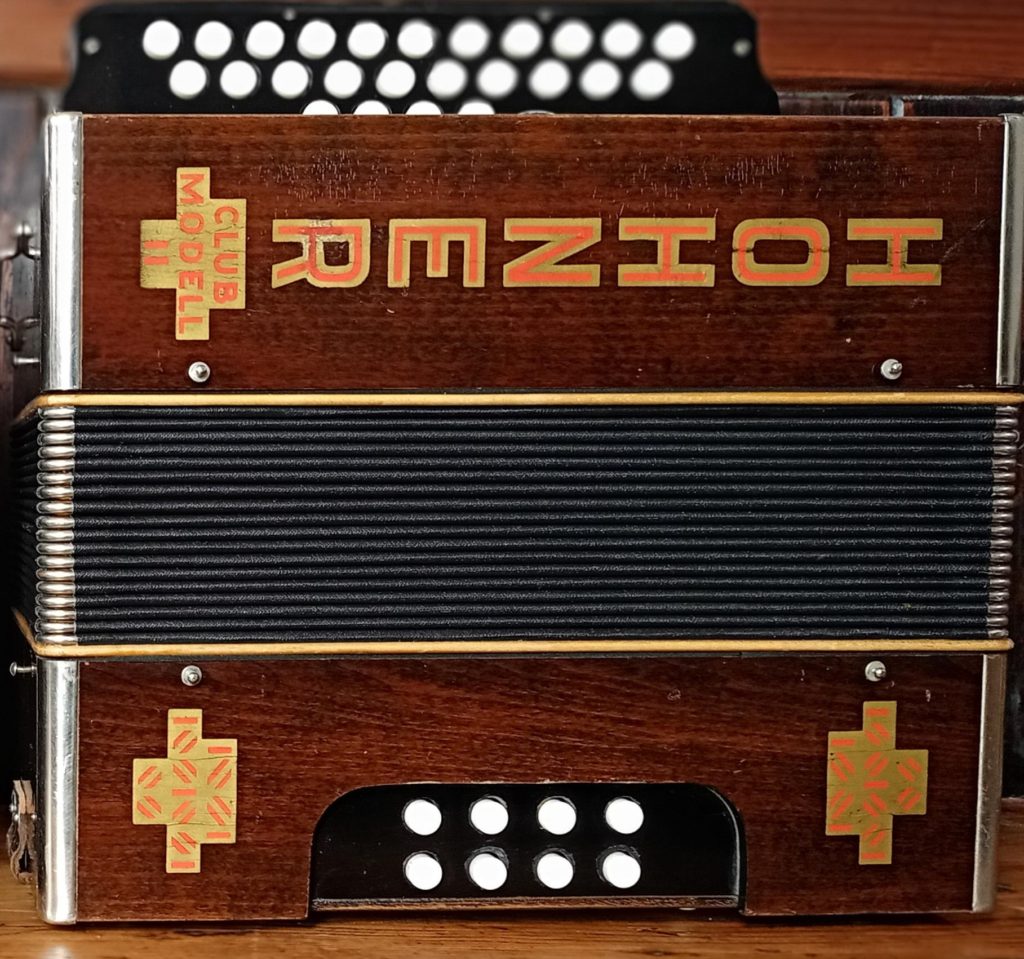


Club Modell 3
The three voice big brother of the Erika these were available in wood or perloid finish. With 7 accidentals this body is the predecessor of many of the two and three voice Club and 3 row accordions of the forties and fifties These were MMM and less common Lmm (club III R) with a register for the low. A big old sound. another lovely old box

Lilliput
The lilliput is another 30’s design. a tiny full two voice club accordion with a two octave bass. This demonstrates the quality of Hohner’s designers. As a result the Lilliput packs a big punch. Nothing like this is produced today. These were designed to travel, they fit in a fairly small motorcycle pannier mine always goes away with me.
These are simple enough to convert and we do a 12 bass option as well



Preciosa
The incredible Preciosa! If the lilliput could be improved on and made smaller it would be the Preciosa (originally a Koch concept). Smaller even than the Lilliput and with a full 4 octave bass end! These have double air flaps operated by one button, but the really curious thing is the reed arrangement inside the treble end. With a weird raised reed pan which houses half the reeds from each block. The preciosa has a very bright and incredibly loud sound for its size. these are probably the smallest full spec accordions ever made. and they sound incredible! The second picture shows a Picolo next to the larger lilliput. The picolo is the same size as the preciosa but the bass is standard Lilliput 2 octave bass without reed sharing. The other difference is that it has plain casein buttons like a lilliput.


Club Modell 4
A three voice available in MMM or LMM (Club 4 R). these were originally the Club 3 type body then became the Modell Victoria type body but slightly deeper on the treble end. Available with no register (MMM), 1 register (LMM) and very rarely 2 registers. The treble end is pretty much identical to the model IX with an aluminium sound board the same treble mechanism and register mechanism as the club IX but without the nice bellows lock and internal taping to the bellows. The bass end has the same simpler (and lighter) mechanism as the modell victoria so uses reed sharing to get the 4 octave bass with a 4 reed chord (root in two octaves , 3rd and 5th in 1 octave). The reedplates are Standard good quality zinc H type and are screwed in place rather than waxed. a really nice box with a sophisticated sound. These have leather valves so don’t suffer from the chemical reaction to the valve glue which plagues the 3BS



Club Modell Victoria
These are a 2 voice box but now have 7 accidental buttons like the Modell 3. This model has mother of pearl buttons and a snazzy mechanism which opens the inner row pallets in a parallel fashion. like the model 3 the accidental row reeds have their own reed block . Wooden soundboard 4 octave bass with 4 reed chords ( 2 octave root and single octave 3rd and 5th). These are pretty loud and, i feel, rather underestimated. filled with good quality zinc H reeds. I will stick my neck out and say this could well be the ultimate morris box .

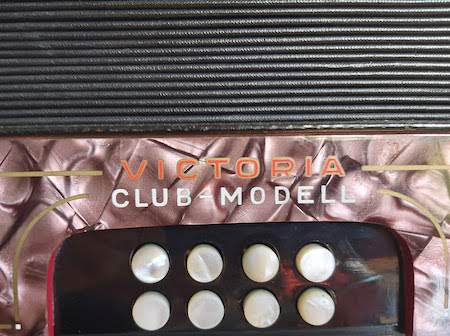

Norma Club
The original Norma Club was simply the Club IV renamed in the mid 1930s. the Norma 1 is the club IV and the Norma II is the Club IV R. other than the grille everything is identical to the Club IV these have zinc H reeds. I am yet to see an original Norma III but externally they look identical to the Club 3BS i am unsure whether these have an aluminium soundboard or whether they use reed sharing or have a bass machine. if someone has one of these please let me know
The next version of these looks very much like the swiss club 3 body but again i don’t know anything much about these so if you have one let me know
There ia another version which is the Norma iii deluxe black wth front register switches like the student accordions
In the 1980s the name was revived
Club Modell VII
A Three voice machine of very high quality these are the compact model. like the 235 these have only 2 banks of reeds with the accidental reeds in line with the main rows Pictures courtesy of Mr Peter Heumos . Check him out on Youtube https://www.youtube.com/c/heumos1 WOOT!

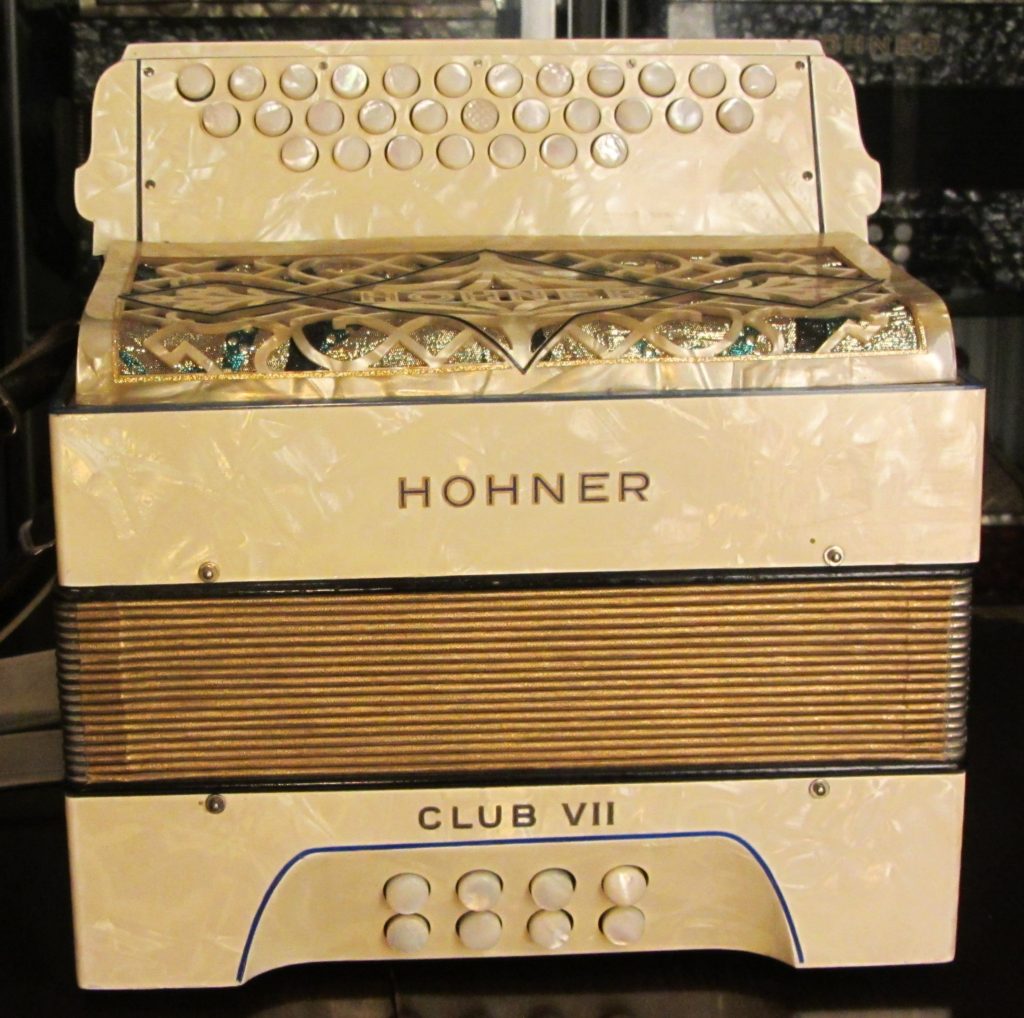


Club Modell VIII
Another three voice Club machine this time MMM the one pictured has the high quality HOHNER reeds and has a wooden soundboard rather than the aluminium of the IX and X. this doesn’t have the rather odd additional chord buttons either. Pictures courtesy of Theo Gibb at the box place



Club Modell IX
Another set of pictures from from Peter the Club Modell IX this identical to the X but with 1 register for the Low reed bank only. These have the top quality reeds stamped HOHNER




Club Modell X / Club X
The best Quality three voice around at the time. These shared the Modell 3 body and later the later IV type body but differ in many ways. The reeds are Hohners best Ally plates each stamped HOHNER, the soundboard is aluminium the bellows are cloth covered inside and out, A bass machine gives a 4 octave bass and 2 octave chords, many have 10 basses rather than 8 and they have a super loud crisp sound with a really crisp bass tone. The bass reeds are on thick plates and some even have switchable helikon bass reeds. A super Club machine.



Club 234 235 255
The ultimate in their day. the 234 was generally a 4 voice as was the 235 which became the ouverture IV. the 255 was a 5 voice which eventually became the Ouverture V. these are top quality some with HOHNER stamped reeds some with early T reeds, quite often rhinestones Helikon bass and as much bling as anyone could possibly want. later on these took on the styling of the early club III then the corona. these sound truly magnificent. One unusual thing about these is that the reeds are arranged in two banks for all keys rather than the more usual three.


Club 2B Victoria
These are probably the most common of the 2 voice Club accordions. These superseded the Modell Victoria The case is an evolution of that model with more integrated sloping bass key arrangement, larger radius on the corners and plastic buttons. These are a really nice sounding 2 voice. A lot of box for the money. These can be converted to standard layout fairly easily.
There is an alternative model ( a red three row 12 bass conversion pictured) which i believe may have been made in the Swiss factory, the reeds are higher quality hohner reeds the mechanisms are Hohner but the construction is very different to the German version and the style is definitely of the later model




Club 1B
This is the club accordion economy line. It has the same treble end as the 2B Victoria but with plain buttons. It has a less fancy keyboard without a thumb groove. On the bass end it has a two octave bass identical to the pokerwork hohners, even using the same blocks. This said these are still a good box and share many parts with the early Three row Corona 2 model. A really good alternative to an erica or pokerwork with a full set of accidentals. Simple to convert to standard layout


Club III B, BF, BR, BS. Mk 1
These are the same body as the 2B victoria but are 3 Voice. The B is MMM with no registers. BF is MMM with 1 register the BR is LMM with 1 register to remove the low. The BS is the same but with another register to remove the M. A proper bass machine allows 4 Octave Bass with full 2 octave chords. these have a huge sound. Having a wooden soundboard and normally with zinc reedplates. These are a good quality 3 voice club accordion if a little on the heavy side (the bass machine doesn’t help). Some of these suffer from a problem whereby something (probably valve glue or wax) reacts with the zinc reedplates which makes the plates turn back and eventually swell which ruins the sound.

Club 2b (Mk 2)
The new rounded case and aluminium H reeds took the 2B into the 50s and beyond. larger than the old Victoria model this is a large box for a 2 row but still a good buy. the case is the same as the IIIB below
Club III B, BS. (Mk2)
The updated model with it’s stand out styling. These carried on the quality of the Mk1. but in some ways are nicer to play. Still with wooden soundboard and under keyboard registers, these are filled with aluminium plate H reeds or sometimes the more modern T reeds. Combined these produce a great depth of sound and is a mainstay of the hohner club accordions



Ouverture Club
The newer version of the Ouverture was available as a 4 or 5 voice. One of the largest hohner club accordions. Theses were LMMH. and LMMMH respectively. These are a very high quality box with switchable deep Helikon bass . These are big and heavy, but worth it. what a machine! This is the earlier model and the family resemblance to the corona R and 3M is striking



Club III M
Probably the club accordions last gasp The replacement to the IIIBS Hohner made a LOT of these. Basically a Corona III R. or vica versa. these are like a mini 3 voice ouverture with an aluminium soundboard, bass machine and register buttons allowing all combinations of the LMM reedset. a good box with a big sound. Personally i didn’t think this was a massive improvement on the older BS. but that is just me. If yo are lucky H ally reeds but mostly modern T reeds.

Hohner Club Morino
A similar case to the Ouverture but with even better sound 12 5 octave basses and a cassotto!, some innovative reedblock arrangements and a price to match, but as good as it gets in the club world. these sound like a church organ and weigh about the same.
Hohner Orchestra
12 11 8 treble with 8 bass another top class late 1930s model 4 treble registers and 1 bass register this is a 4 voice and pretty rare
